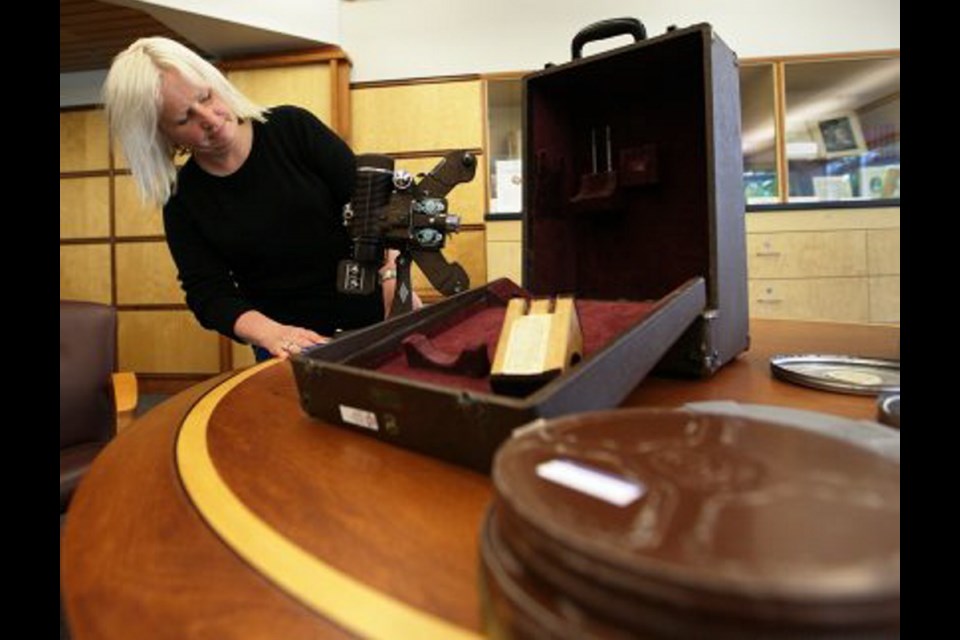Home movies shot by Mathew Ko, a prominent businessman and member of the Victoria Chinese community, offer a fresh insight into history, a local artist says.
“Too much of the history of Chinese people in Canada has been written by outsiders,” Robert Amos said in an interview last week. “It concerns itself with difficult things like prostitution, opium, dead railway workers and all sorts of horrible stuff.
“But these movies tell a story from the inside and it’s a success story,” added Amos, who writes on art for the Times Colonist. “It is a very good, corrective tonic to what has been stacked up in the name of history.”
Ko’s home movies, dating from about 1939 to 1950, have been digitized and posted online by the University of Victoria Libraries Special Collections and the University Archives. Now the public can get a visual sense of life in Victoria over those years as recorded by a successful family.
Ko (1909-2000) was born in Victoria and ran the family business, GB Jewelry and Watch Repair, established by his father, Simon Ko Bong. And throughout his life, Ko maintained an interest in amateur movie making.
Amos, who has long had an interest in Victoria’s Chinatown, first learned about the movies about four years ago. At a dinner to celebrate Chinese New Year, he found himself seated beside Valerie Ko, Mathew’s daughter, and asked her if she had any old family photos.
He was told she didn’t have many. But she said her father had been a home movie enthusiast, and would Amos be interested?
About a year later, he saw the movies and became convinced they were significant enough to warrant long-term preservation in an archival collection, so he contacted UVic.
Amos said the movies are not only historic but well done: Ko was a good moviemaker with a fine eye for composition. But he also had an sense for significant local events, instead of just family moments.
So Ko’s movies, for example, record a 1939 demonstration protesting the export of scrap steel to Japan because it was feared it would be used for war material. He also filmed parades, the 1939 Royal Visit and fundraising parties in Chinatown to raise money for the Second World War, and the arrivals and departures of large ships.
“There is lots of things of interest in these movies and I don’t think that’s the case of most people who buy themselves a camera,” said Amos.
Lara Wilson, UVic director of special collections and archives, said the Ko movies will be of interest to a wide variety of people, not just those looking for information on Victoria’s enduring Chinese community. The films also consistently highlight local landmarks such as the Empress Hotel, Butchart Gardens and Royal Athletic Park.
“The Ko films have something for everybody who is interested in local history,” said Wilson.
She also said they were mostly shot with Kodachrome film, relatively rare for amateur movies at the time because the film only hit the market around 1935.
From an archival sense, Kodachrome film is also significant because it preserves well. The colours in Ko’s movies are not just authentic but also remain quite rich for today’s viewer.
“We tend to think of the early and mid-20th century in monochromatic terms,” said Wilson. “In fact, it was very colourful.”
“In Ko’s films you see people dressed in colourful clothes, the buildings are decorated, the floats and drill teams in the parades were colourful,” she said.
“It makes it more real for today’s viewers,” said Wilson.
Some of Ko’s pictures will also be used in a photo exhibit at UVic. Reflections: Images of Chinese Women in Canada, A Historical Photo Exhibit will be in the Mearns Centre for Learning in the McPherson Library, from Monday to May 30.
Click here to learn more about Mathew Ko and his movies.
[email protected]



